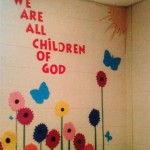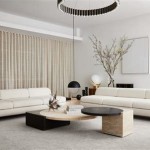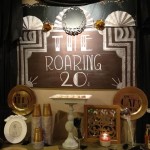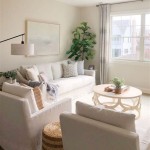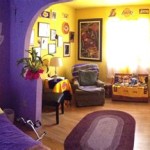How To Decorate a Church Prayer Room
Creating a dedicated prayer room within a church offers a sanctuary for quiet reflection, contemplation, and communion with the divine. Effective decoration transforms a simple space into an environment conducive to spiritual growth and personal connection with faith. The design should prioritize tranquility, reverence, and the needs of the congregation. This requires careful consideration of various elements, from color palettes and lighting to furniture selection and the incorporation of meaningful symbols.
The overall atmosphere should be calming and inviting, encouraging individuals to enter and feel immediately at peace. Avoid overly stimulating or distracting elements that could detract from the purpose of the space. The goal is to foster an environment where distractions are minimized and the focus is directed inward, facilitating a deeper sense of spiritual connection.
Key Point 1: Establishing a Calming Atmosphere
The atmosphere of a prayer room is paramount to its effectiveness. A calming environment lowers stress levels and allows for greater focus on prayer and meditation. Several factors contribute to achieving this goal, including color choices, lighting, and the minimization of external noise.
Color psychology plays a significant role in influencing mood. Soft, muted tones such as blues, greens, and grays are generally considered conducive to relaxation and contemplation. These colors evoke feelings of peace, serenity, and tranquility. Avoid bright, vibrant colors, such as reds and yellows, as they can be overstimulating and distracting. A consistent color scheme throughout the room can also contribute to a sense of harmony and order.
Lighting is another crucial element. Natural light is highly desirable, if available. Large windows can provide ample natural light, creating a warm and inviting atmosphere. However, direct sunlight can be harsh and create glare, so consider using sheer curtains or blinds to diffuse the light. Artificial lighting should be soft and indirect. Avoid harsh fluorescent lighting, which can be sterile and uninviting. Instead, opt for warm LED lights or incandescent bulbs. Dimmable lights offer flexibility in adjusting the ambiance to suit individual preferences and the time of day. Candles, whether real or battery-operated, can add a sense of warmth and reverence, but should be carefully positioned for safety.
Minimizing external noise is essential for creating a quiet and contemplative space. Soundproofing measures can be implemented to block out noise from outside the church building or from other areas within the building. Thick curtains, upholstered furniture, and soft flooring can help absorb sound and reduce echo. Consider using a white noise machine or playing soft, ambient music to further mask distracting noises.
Incorporating natural elements can also contribute to a calming atmosphere. Plants, such as ferns or orchids, can add a touch of life and freshness to the space, while also helping to purify the air. A small water feature, such as a tabletop fountain, can provide a gentle, soothing sound that promotes relaxation.
Key Point 2: Furnishing and Layout for Prayer
The furniture and layout of the prayer room should support various forms of prayer and meditation. The arrangement should be flexible enough to accommodate individual reflection as well as small group gatherings. Comfort, functionality, and accessibility are key considerations when selecting furniture.
Seating options should be varied to cater to different preferences. Comfortable chairs, benches, and cushions offer choices for individuals who prefer to sit. Kneelers provide a traditional option for those who wish to pray in a kneeling position. The chairs and benches should be supportive and ergonomically designed to promote good posture and prevent discomfort during extended periods of prayer. Consider incorporating a few floor cushions for individuals who prefer to sit on the floor.
A small table or lectern can provide a surface for holding Bibles, prayer books, or journals. A bookshelf can house a collection of inspirational literature and devotional materials. The table should be placed in a central location or near the seating areas, making it easily accessible to all. A journal and pen can be provided to encourage individuals to record their thoughts and prayers.
The layout of the room should be conducive to both individual and group prayer. Arrange the seating in a way that allows for both private reflection and shared worship. A central open space can be used for group gatherings or guided meditations. Consider creating small alcoves or corners that provide a sense of privacy for individuals who desire more secluded prayer. The furniture should be arranged in a way that promotes a sense of openness and flow, avoiding overcrowding or obstacles that could hinder movement.
Accessibility is a crucial consideration. Ensure that the prayer room is accessible to individuals with disabilities. Ramps or elevators should be provided for those who use wheelchairs. Seating should be available at various heights to accommodate individuals with limited mobility. Large-print Bibles and prayer books should be available for those with visual impairments.
Minimizing clutter is essential for creating a peaceful and uncluttered environment. Avoid unnecessary decorations or furniture. Keep the space clean and organized, with designated areas for storing items. A simple, minimalist design can be more effective in promoting a sense of calm and focus.
Key Point 3: Incorporating Religious Symbols and Art
Religious symbols and artwork can enhance the spiritual atmosphere of the prayer room and serve as visual reminders of faith. The selection and placement of these items should be carefully considered to avoid overwhelming the space or distracting from prayer. The chosen symbols and artwork should be meaningful and resonate with the congregation.
A cross or crucifix is a central symbol of Christianity and can be prominently displayed in the prayer room. Consider the size and style of the cross to ensure it is appropriate for the space. A simple wooden cross can be a powerful reminder of the sacrifice of Christ. Other common religious symbols include icons, statues, and banners depicting saints or biblical scenes.
Religious artwork can add beauty and inspiration to the prayer room. Choose artwork that reflects the values and beliefs of the church. Consider commissioning local artists to create original pieces that are specifically designed for the space. Artwork can depict biblical stories, landscapes, or abstract representations of faith. Avoid artwork that is overly graphic or violent, as it can be disturbing or distracting.
Scripture verses can be displayed on the walls or incorporated into the artwork. Choose verses that are particularly meaningful or inspiring. Consider using calligraphy or decorative lettering to enhance the visual appeal of the verses. Scripture verses can serve as a constant reminder of God's word and offer guidance during prayer.
Natural elements can also be used as religious symbols. A bowl of water can represent baptism and purification. A burning candle can symbolize the presence of the Holy Spirit. Flowers can represent the beauty and fragility of life. These natural elements can add a sense of reverence and connection to the natural world.
The arrangement of religious symbols and artwork should be carefully considered. Avoid overcrowding the space or creating a cluttered look. Place the symbols and artwork in strategic locations where they will be easily seen and appreciated. Consider using spotlights or accent lighting to highlight particular pieces. The goal is to create a visually appealing and spiritually enriching environment that enhances the prayer experience.
The decoration of a church prayer room is a process that requires careful planning and consideration. By focusing on creating a calming atmosphere, providing functional and comfortable furnishings, and incorporating meaningful religious symbols and artwork, a church can create a space that truly fosters prayer, reflection, and spiritual growth for its congregation. This dedicated space will become a valuable asset to the church community, providing a sanctuary for individuals to connect with their faith and find solace in prayer.



Pin On Prayers

Prayer Space Designs S Model Design Ideas


Altar Designs Prayer Room Roopakoodu Catholic

Home Altar Our Lady Catholic Decorating

Prayer Space Designs S Model Design Ideas

Home Altar

Pin On Pooja Rooms
